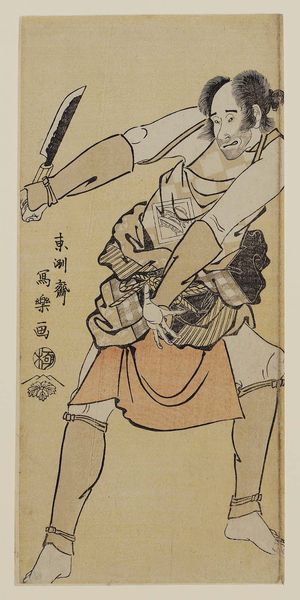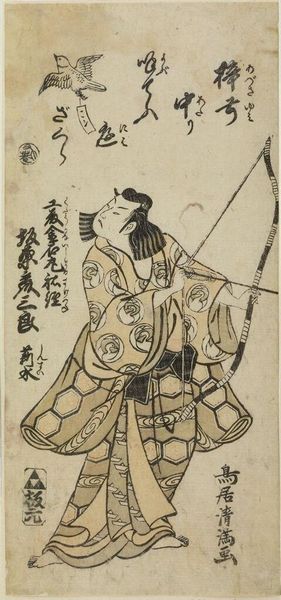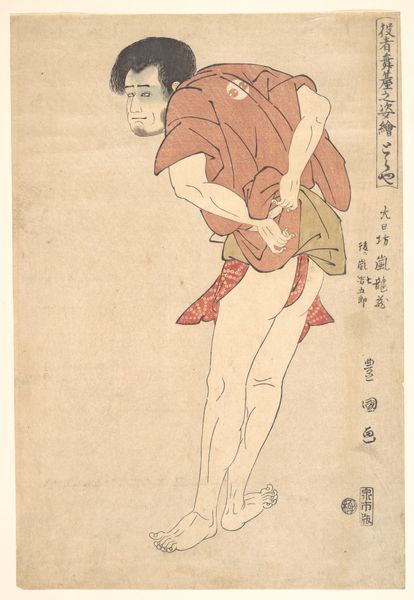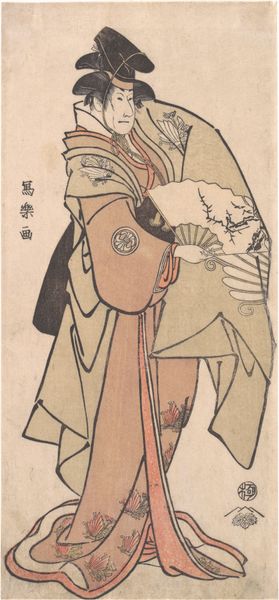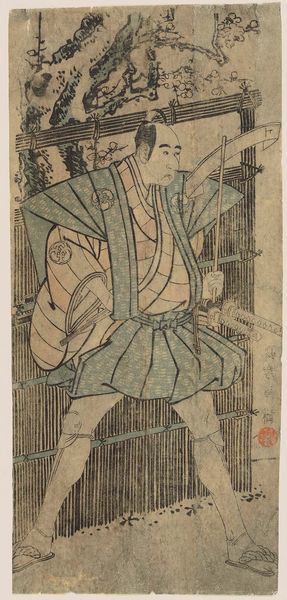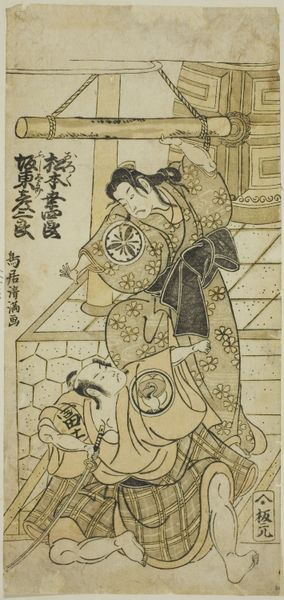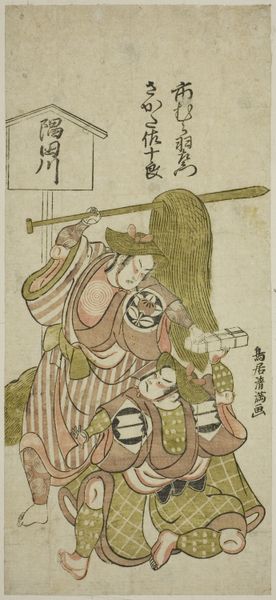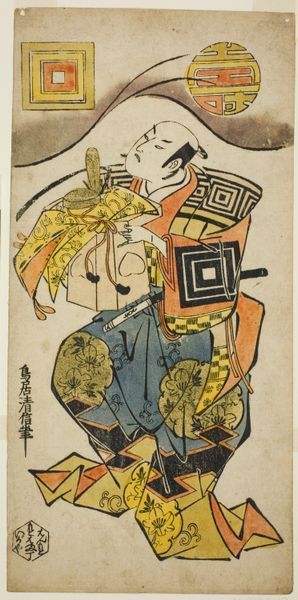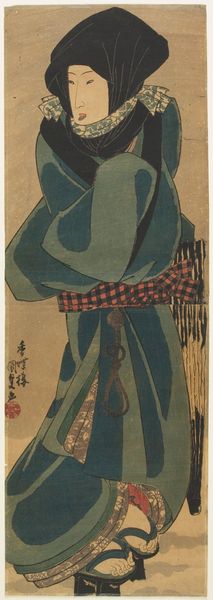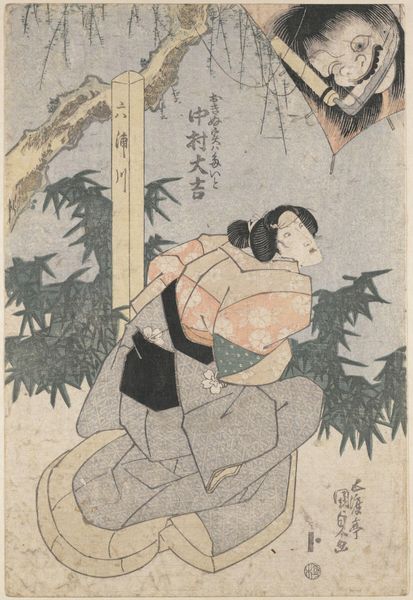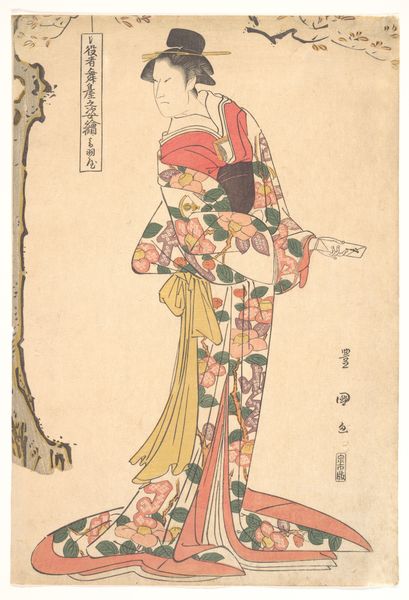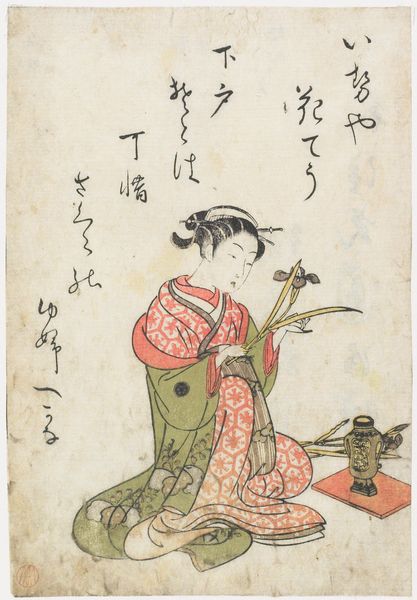
print, woodblock-print
# print
#
caricature
#
ukiyo-e
#
figuration
#
woodblock-print
Copyright: Public domain
Editor: Here we have Sharaku's woodblock print from 1794, "Sakata Hangorō III as Yahazu no Yahatei." There’s a sense of contained tension in his posture, his hand gripping the sword... How do you interpret this work in the context of its time? Curator: This print, like much of Sharaku’s work, provides a fascinating lens through which to examine the Edo period's complex relationship with kabuki theater and social critique. Sharaku's caricatures of actors weren't simply portraits; they were pointed commentaries on celebrity, identity, and the blurred lines between performance and reality. Consider, for instance, how Sharaku has chosen to portray Hangorō—what emotions or characteristics do you discern? Editor: I see a sense of unease, almost… distaste? It’s not a flattering portrayal. Curator: Precisely! Sharaku deliberately moved away from idealized depictions, opting instead to highlight individual quirks and imperfections. This challenges the established norms of Ukiyo-e, which often focused on beauty and grace. What does it mean to represent someone, particularly someone in a position of power, in such an unflattering light? What social commentary might Sharaku be offering here, through the exaggerated features and awkward stance? Editor: Perhaps he's questioning the nature of power, or celebrity? Revealing the human flaws behind the mask of fame? Curator: Exactly. We must remember the context: strict social hierarchies, rigid performance conventions, and a burgeoning popular culture. Sharaku's work seems to interrogate all these things. It is an incisive glimpse into the power dynamics and cultural anxieties of his era. Editor: I never thought about ukiyo-e prints as having so much potential for social critique! This really changes how I see them. Curator: Indeed, looking through the lens of social context and artistic intention reveals layers of meaning that enrich our understanding and appreciation of Sharaku's art and ukiyo-e overall.
Comments
No comments
Be the first to comment and join the conversation on the ultimate creative platform.
